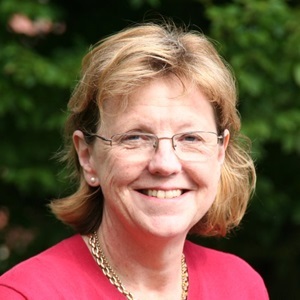Emma Woods caught up with the Chair of the resilience working group, Dame Georgina Mace DBE FRS, to get her thoughts on the impact of the report, the international policy landscape, and what might come next.

What a difference a year makes.
Just over twelve months ago, the Royal Society published its ‘Resilience to extreme weather’ report. This came ahead of a big year for international policy, with the adoption of three new frameworks that relate to extreme weather: the Sendai Framework for Disaster Risk Reduction (March 2015), the Sustainable Development Goals (September 2015), and the Paris Agreement on climate change (December 2015).
A year on from publishing our report, and with all three frameworks now in place, I caught up with the Chair of the resilience working group, Dame Georgina Mace DBE FRS, to get her thoughts on the impact of the report, the international policy landscape, and what might come next.
It’s been a busy year. What do you see as the greatest impact of the Royal Society’s resilience report?
It was very gratifying to see the work that we did reflected in several scientific and policy reports that emerged over the year. Most notably, the report’s recommendations were reflected in the text of the Sendai Framework for Disaster Risk Reduction, drawing out the importance of science in this ever-more crucial area of international policy. Our analyses have also been used in other research, for example in two recent Lancet Commission reports on environment and health.
Most striking to me is the much greater clarity about the concept of resilience in science and policy discussions compared to when we started our report. I am not sure if we can take credit for this or not, but at the very least it means that our timing was good! In my view, we did more than that and our report did contribute to a broader understanding of resilience across a range of different sectors.
How has this impact been achieved?
The Society’s approach to follow-up work changed up a gear for this project. Publishing the report did not mean that the work was over; far from it in fact! Many members of the working group, but especially the Royal Society staff, have spent the last year working hard to bring the report to the attention of people that might be interested in it.
We focussed on government policymaking and briefed numerous public and private policymaking bodies in the UK, Europe and internationally. We also presented our findings at scientific meetings focussed on climate change, sustainable development and disasters, in order to make clear the links from science to policy. This means we now have a range of presentations, shorter statements and online content freely available and geared to different audiences.
Has your involvement in the project influenced your own work in any way?
I am Professor of Biodiversity and Ecosystems at UCL and my own specialism is ecology. So some of the work in this project – which ranged from engineering through social and development sciences and into international financing and economics – was new to me.
I have used my new understanding gleaned from the experts on the working group in several other projects. Peter Head and I collaborated with colleagues from the London School of Hygiene and Tropical medicine on a planetary health report for the Lancet, and Peter Cox and I worked with UCL medical researchers on a Lancet report on climate change and health. All this fell neatly into work I was already involved in looking at planetary boundaries.
So I have learned a lot from the project that has, I hope, been put to good use elsewhere.
What do you make of the three global frameworks that the resilience project focused on – the Sendai Framework, Sustainable Development Goals, and Paris Agreement on climate change?
It was very pleasing that at the end of 2015 we could look back and see these international frameworks in place: this was by no means a certain outcome at the beginning of 2015. These frameworks were always a focus for our work, and at times it seemed that it was going to be very hard for our science to influence them in any meaningful way. But overall, it has been an excellent outcome and the product of hard work by many people over a long time!
The frameworks collectively put in place a robust international vision for dealing with challenges like extreme weather. They acknowledge the important role of science, which is good to see. This is particularly true for the Sendai Framework – so much so that the Society convened a group of disaster risk experts last summer to discuss how the scientific community can meet the challenges laid out for it in the Sendai text.
On that note, how can the Society help ensure that science plays its part when it comes to actually implementing these frameworks?
The task of putting these international policies into action is a very large one. The Society and other scientific organisations will have an important role to play in helping policymakers navigate this task.
For example, there is much to be done to develop and put into use suitable metrics that allow the effectiveness of different resilience-building measures to be compared. Adjustments also need to be made so that scientists can provide more information that is suitable for policymakers’ needs. But beyond the scientific community, expertise from the private sector, non-governmental organisations and local communities will be required in order to meet this challenging task.
Keep your eyes on In Verba for further resilience reflections from Professor Katrina Brown, one of the project’s working group members.
